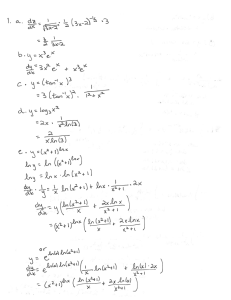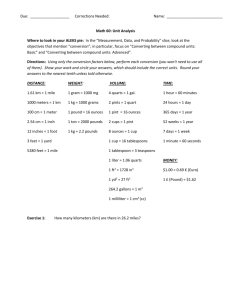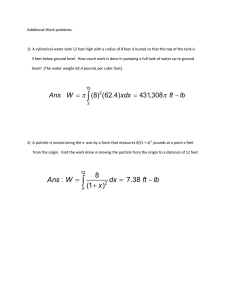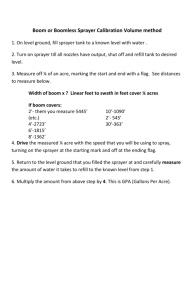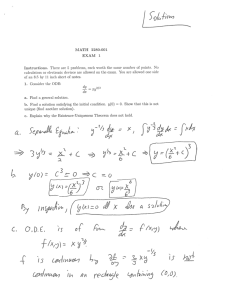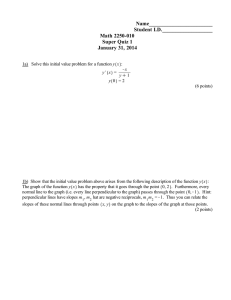Cooperative Extension Service The University of Georgia
advertisement
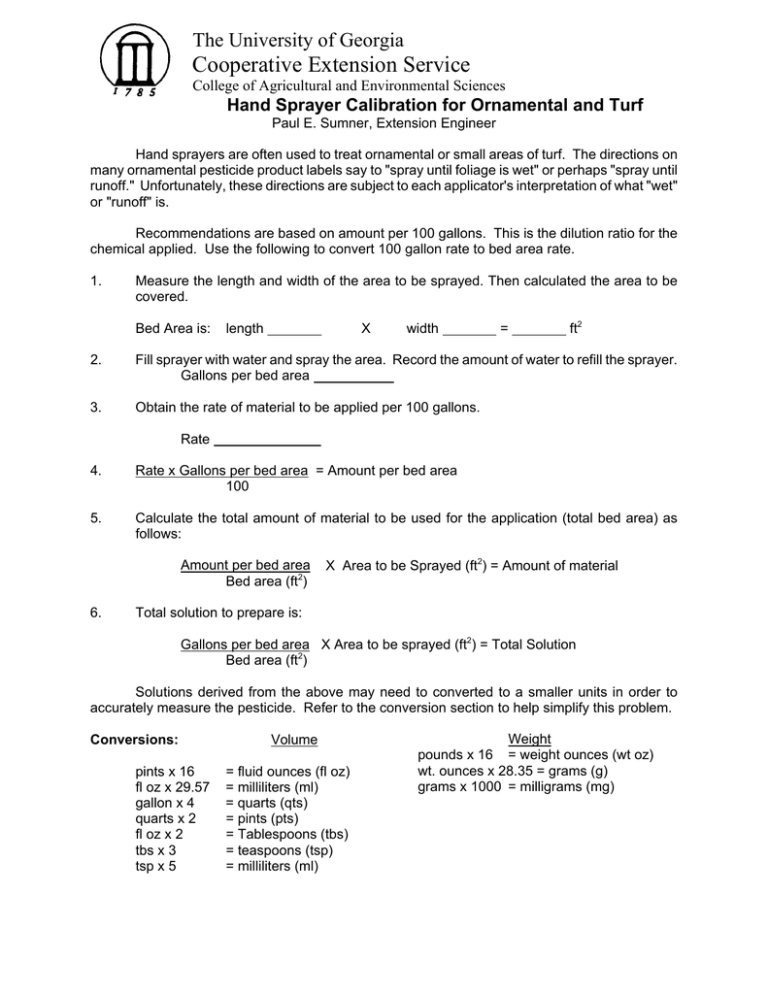
The University of Georgia Cooperative Extension Service College of Agricultural and Environmental Sciences Hand Sprayer Calibration for Ornamental and Turf Paul E. Sumner, Extension Engineer Hand sprayers are often used to treat ornamental or small areas of turf. The directions on many ornamental pesticide product labels say to "spray until foliage is wet" or perhaps "spray until runoff." Unfortunately, these directions are subject to each applicator's interpretation of what "wet" or "runoff" is. Recommendations are based on amount per 100 gallons. This is the dilution ratio for the chemical applied. Use the following to convert 100 gallon rate to bed area rate. 1. Measure the length and width of the area to be sprayed. Then calculated the area to be covered. Bed Area is: length X width = ft2 2. Fill sprayer with water and spray the area. Record the amount of water to refill the sprayer. Gallons per bed area 3. Obtain the rate of material to be applied per 100 gallons. Rate 4. Rate x Gallons per bed area = Amount per bed area 100 5. Calculate the total amount of material to be used for the application (total bed area) as follows: Amount per bed area Bed area (ft2) 6. X Area to be Sprayed (ft2) = Amount of material Total solution to prepare is: Gallons per bed area X Area to be sprayed (ft2) = Total Solution Bed area (ft2) Solutions derived from the above may need to converted to a smaller units in order to accurately measure the pesticide. Refer to the conversion section to help simplify this problem. Conversions: pints x 16 fl oz x 29.57 gallon x 4 quarts x 2 fl oz x 2 tbs x 3 tsp x 5 Volume = fluid ounces (fl oz) = milliliters (ml) = quarts (qts) = pints (pts) = Tablespoons (tbs) = teaspoons (tsp) = milliliters (ml) Weight pounds x 16 = weight ounces (wt oz) wt. ounces x 28.35 = grams (g) grams x 1000 = milligrams (mg) EXAMPLE Chris Tree wanted to spray atrazine, as Aatrex 80W (the "W" indicates the herbicide is in a wettable power form), in his 20-acre white pine Christmas tree farm. He filled his 4-gallon back-pack sprayer half full with water, installed a 15-p.s.i. (pounds per square inch) pressure spring in the regulator, and attached an even-flat-fan nozzle. Holding the nozzle at a constant height, he then sprayed 50 foot section and measured the ESW at several points. His average ESW was 36 inches. Mr. Tree obtaining the calibration distance for Table 1, marked a 113 foot calibration in his tree farm. He then traveled 4 times the calibration distance measuring the time in seconds. The times were 21, 24, 23, and 24 seconds. His average travel time was 23 seconds. He then measured the flow from the nozzle four times in ounces. His average collection was 18.34 ounces or 18.34 GPA. This is well within the 10-20 gallons/acre carrier rate suggested. Chris wanted to spray a 3-foot band over his trees, which are planted 5 feet apart in the row and 8 feet between rows in the 20-acre plantation. Since he is spraying 3 feet of every 8 feet, he will need enough chemical to spray 3/8 (or 0.375) x 20 acres = 7.5 acres. His Extension agent recommended spraying 5 pounds active ingredient of atrazine per acre. The label of Aatrex 80W says it is 80% active ingredient. Since Chris's sprayer holds 4 gallons/tank, he can cover: 4 gallons/tank = 0.218 acres/tank 18.34 gallons/acre He will need: 5 pounds a.i./acre = 6.25 pounds/Aatrex per acre 0.80 Then, 6.25 pounds/acre x 0.218 acre/tank = 1.36 pounds Aatrex, which should be added to each 4-gallon tankful to get the rate he desires. As a check on calculations, he will need 6.25 pounds/acre Aatrex x 7.5 acres = 46.9 pounds of Aatrex. Then, since he can cover 0.218 acres/tank, he will need: 7.5 acres = 34.4 tanks 0.218 acres/tank Then 34.4 tanks x 1.36 pounds/tank = 47 pounds Aatrex, which matches the above calculation. Accurate sprayer calibration is essential to a successful application. Following the simple calibration steps described herein will ensure that your time and money will not be wasted on an application that does not give the desired results. The University of Georgia and Ft. Valley State College, the U.S. Department of Agriculture and Counties of the state Cooperating. The Cooperative Extension Service offers educational programs, assistance and materials to all people without regard to race, color, national origin, age sex or disability. An Equal Opportunity/affirmative Action Organization Committed to a Diverse Work Force Engineering Misc. Pub. No. ENG02-002 October, 2002 Issued in furtherance of Cooperative Extension work, Acts of May 8 and June 30, 1914, The University of Georgia College of Agriculture and the U. S. Department of Agriculture cooperating. Gale A. Buchanan, Dean and Director
